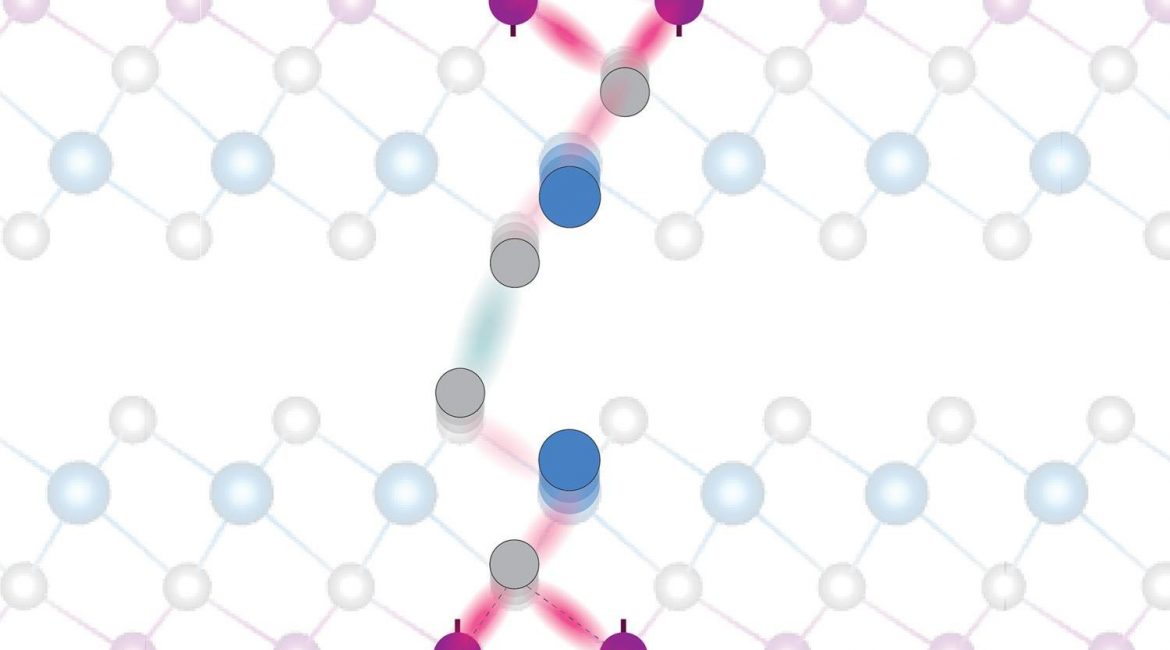| Apr 16, 2022 |
|
(Nanowerk News) Magnetism, one of the oldest technologies known to humans, is at the forefront of new-age materials that could enable next-generation lossless electronics and quantum computers. Researchers led by Penn State and the university of California, San Diego have discovered a new ‘knob’ to control the magnetic behavior of one promising quantum material, and the findings could pave the way toward novel, efficient and ultra-fast devices.
|
|
“The unique quantum mechanical make-up of this material — manganese bismuth telluride — allows it to carry lossless electrical currents, something of tremendous technological interest,” said Hari Padmanabhan, who led the research as a graduate student at Penn State. “What makes this material especially intriguing is that this behavior is deeply connected to its magnetic properties. So, a knob to control magnetism in this material could also efficiently control these lossless currents.”
|
|
Manganese bismuth telluride, a 2D material made of atomically thin stacked layers, is an example of a topological insulator, exotic materials that simultaneously can be insulators and conductors of electricity, the scientists said.
|
|
Importantly, because this material is also magnetic, the currents conducted around its edges could be lossless, meaning they do not lose energy in the form of heat. Finding a way to tune the weak magnetic bonds between the layers of the material could unlock these functions.
|
|
Tiny vibrations of atoms, or phonons, in the material may be one way to achieve this, the scientists reported in the journal Nature Communications (“Interlayer magnetophononic coupling in MnBi2Te4“).
|
 |
| This illustration depicts atomic vibrations, or phonons, in the crystalline lattice structure of manganese bismuth telluride. The discovery that these vibrations can tune weak magnetic bonds between the layers of this 2D material could unlock special properties and pave the way for its use in next generation electronic devices. (Image: Penn State)
|
|
“Phonons are tiny atomic wiggles — atoms dancing together in various patterns, present in all materials,” Padmanabhan said. “We show that these atomic wiggles can potentially function as a knob to tune the magnetic bonding between the atomic layers in manganese bismuth telluride.”
|
|
The scientists at Penn State studied the material using a technique called magneto-optical spectroscopy – shooting a laser onto a sample of the material and measuring the color and intensity of the reflected light, which carries information on the atomic vibrations. The team observed how the vibrations changed as they altered the temperature and magnetic field.
|
|
As they altered the magnetic field, the scientists observed changes in the intensity of the phonons. This effect is due to the phonons influencing the weak inter-layer magnetic bonding, the scientists said.
|
|
“Using temperature and magnetic field to vary the magnetic structure of the material — much like using a refrigerator magnet to magnetize a needle compass — we found that the phonon intensities were strongly correlated with the magnetic structure,” said Maxwell Poore, graduate student at UC San Diego, and co-author of the study. “Pairing these findings with theoretical calculations, we inferred that these atomic vibrations modify the magnetic bonding across layers of this material.”
|
|
Scientists at UC San Diego conducted experiments to track these atomic vibrations in real time. The phonons oscillate faster than a trillion times a second, many times faster than modern computer chips, the scientists said. A 3.5 gigahertz computer processor, for example, operates at a frequency of 3.5 billion times per second.
|
|
“What was beautiful about this result was that we studied the material using different complementary experimental methods at different institutions and they all remarkably converged to the same picture,” said Peter Kim, graduate student at UC San Diego, and co-author of the paper.
|
|
Further research is needed to directly use the magnetic knob, the scientists said. But if that can be achieved, it could lead to ultra-fast devices that can efficiently and reversibly control lossless currents.
|
|
“A major challenge in making faster, more powerful electronic processors is that they heat up,” said Venkatraman Gopalan, professor of materials science and engineering and physics at Penn State, Padmanabhan’s former adviser, and co-author of the paper. “Heating wastes energy. If we could find efficient ways to control materials that host lossless currents, that would potentially allow us to deploy them in future energy-efficient electronic devices.”
|


